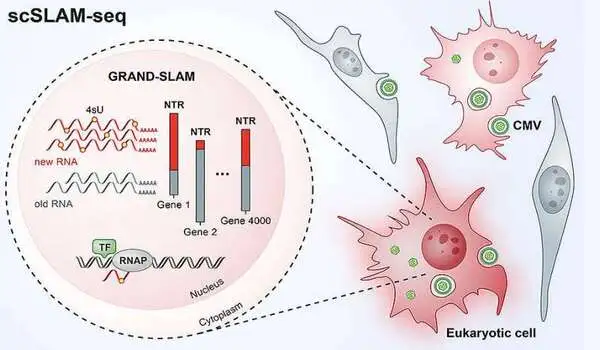The tug-of-war between the virus and host is centered on the interaction between ribonucleic acid (RNA) and proteins, which is also crucial for preserving cellular homeostasis. Up until now, no technique has been available to map directly and impartially over the entire genome the interactions of particular RNA sections without requiring genetic change of the target RNA or cell.
Now, a novel technique that gets around this restriction has been created by researchers from the US’s Broad Institute of MIT and Harvard as well as the German Helmholtz Institute for RNA-based Infection Research (HIRI). The journal Nucleic Acids Research published their findings recently.
RNA viruses, such as the coronavirus SARS-CoV-2, use regulatory RNA elements to recruit host and virus proteins to carry out their own gene expression program and promote the growth of viral progeny in human cells. Thus, the first step in locating weaknesses in the viral replication process and enabling the logical design of novel antivirals is comprehending the interactions between viral RNAs and the regulatory components therein.
With this new tool we can determine the interactions for practically every cellular RNA and every regulatory element within these RNAs. This can fundamentally change the way we look at RNA in the cell – a crucial milestone.
Jens Aydin
The method
Researchers from the Helmholtz Institute for RNA-based Infection Research (HIRI) in Würzburg, in collaboration with the Broad Institute of MIT and Harvard in the US, have recently developed a new method that, for the first time, enables the discovery of interactions for specific regions within a target RNA molecule. Using mass spectrometry, the technique, named SHIFTR, allows the unbiased and comprehensive mapping of proteins that interact with a specific RNA sequence — in living cells and without genetic modification.
“Until now, it has not been possible to study the interplay between proteins and individual RNA regions in live cells without genetic manipulation, for instance, by adding tag sequences to the target RNA. Our method, called SHIFTR, finally delivers this and is easy to execute, too. Beyond region-resolution, SHIFTR also requires orders of magnitudes fewer input material compared to the state-of-the-art, is highly scalable and cost-effective,” explains Mathias Munschauer, who leads a research group at the Helmholtz Institute Würzburg, a site of the Braunschweig Helmholtz Centre for Infection Research (HZI) in cooperation with the Julius-Maximilians-Universität (JMU) Würzburg.
“With this new tool we can determine the interactions for practically every cellular RNA and every regulatory element within these RNAs,” says Jens Aydin, a PhD student in Mathias Munschauer’s research group and the first author of the study in Nucleic Acids Research. “This can fundamentally change the way we look at RNA in the cell — a crucial milestone,” adds Munschauer.

SARS-CoV-2 in focus
The study team was able to provide more insight into the SARS-CoV-2 replication mechanism by employing the novel technique. For the first time, the scientists were able to investigate the 5′ and 3′ terminal sections of the viral RNA by looking at distinct sequence regions within real SARS-CoV-2 RNAs generated during infection.
Untranslated regulatory elements that regulate protein synthesis, RNA stability, and viral genome replication are known to be present in these areas. They discovered hitherto unidentified interactions with proteins connected to the synthesis of viral RNAs in addition to recognized interactors. A few of these recently identified relationships may be targets for novel antiviral treatments.
In the future, SHIFTR can be used to gain further insight into the regulation of cellular transcriptomes, or all of the RNA molecules in a cell, in both health and disease. This could lead to the discovery of new regulatory interdependencies and potential targets for medication. Additionally, by analyzing how RNA-based treatments interact with the target cell’s regulatory apparatus, researchers can use the SHIFTR platform to guide the development of more effective RNA-based medications, including mRNA vaccinations.
















